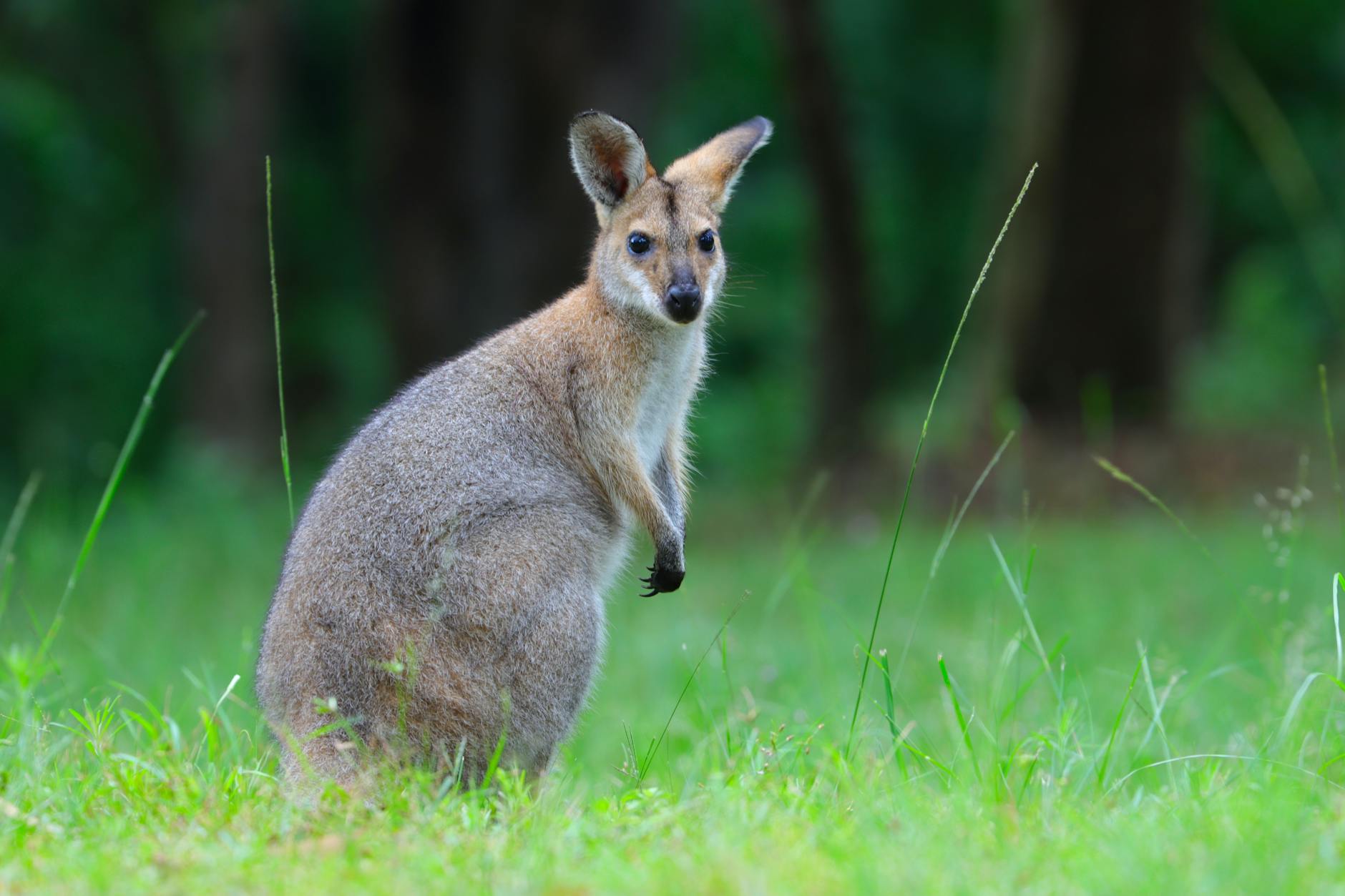
When people think of Australia’s wildlife, kangaroos often hop to the top of the list. But just as charming—and perhaps even more adorable—are their smaller relatives: the wallabies. These marsupials are found in a variety of habitats throughout Australia and nearby islands, and they bring a unique blend of agility, adaptability, and undeniable cuteness to the animal kingdom.
What Is a Wallaby?
Wallabies belong to the macropod family, just like kangaroos and wallaroos. The term “macropod” means “big foot,” a reference to their large, powerful hind legs. Wallabies are generally smaller than kangaroos, with most species standing between 1.5 to 3.3 feet (45 cm to 1 meter) tall. Despite their size, they can leap impressively long distances—an essential skill for navigating rough terrain.
Where Do Wallabies Live?
Wallabies are incredibly adaptable and can be found in forests, grasslands, rocky outcrops, and even deserts across Australia. Some species, such as the swamp wallaby, thrive in dense vegetation, while others like the rock wallaby are masters at hopping among boulders and cliff faces. A few wallaby species also inhabit Tasmania and parts of New Guinea. There are even introduced populations in places like New Zealand and Hawaii.
Types of Wallabies
There are over 30 recognized species of wallabies. Here are a few notable ones:
- Swamp Wallaby: Dark-furred and shy, this species is often seen alone and can survive in dense, wet forest habitats.
- Agile Wallaby: Common in northern Australia, it’s known for its speed and ability to live in open grasslands.
- Rock Wallaby: With padded feet and remarkable balance, rock wallabies are adapted to life on steep cliffs and rocky outcrops.
- Tammar Wallaby: One of the smallest species, it’s found in southern and western Australia and was once thought extinct on the mainland.
What Do Wallabies Eat?
Wallabies are herbivores with a diet mainly consisting of grasses, leaves, and shrubs. Their digestive system allows them to extract nutrients efficiently, making them well-suited for Australia’s often harsh and dry environment. They feed mostly in the early morning and late afternoon to avoid the heat of the day.
Baby Wallabies: Meet the Joeys
Like kangaroos, wallabies are marsupials, which means they give birth to tiny, underdeveloped young that crawl into their mother’s pouch to continue developing. A baby wallaby, called a joey, will stay in the pouch for several months before gradually venturing out into the world.
Are Wallabies Endangered?
While many wallaby species are doing well, others face threats from habitat loss, invasive predators (like foxes and feral cats), and vehicle collisions. Conservation efforts are underway for some vulnerable species, especially the brush-tailed rock wallaby, which has seen sharp declines in certain areas.
Fun Fact: A group of wallabies is sometimes called a mob, just like kangaroos!
Whether bounding across open plains or peeking out from a pouch, wallabies are a wonderful example of Australia’s unique and diverse wildlife. Their compact size, agile movements, and endearing faces make them a true treasure of the animal kingdom.
More photos below ↓












Disclaimer: This blog post is for edutainment purposes only and may not be entirely accurate.






